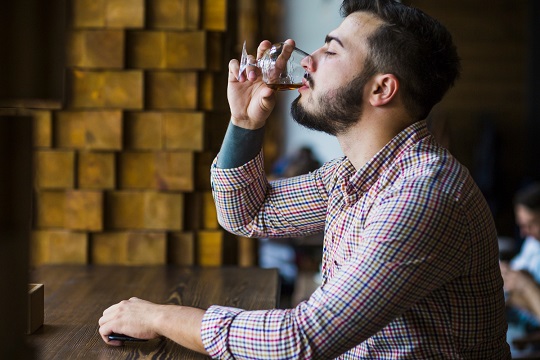At this stage, there is more significant social interaction with their environment, which favors establishing stronger ties with friends and colleagues, which leads them to have other figures that guide their actions. Current studies indicate that the onset of alcohol drinking is between 12-13 years. The beginning or entry route is usually alcohol later.
The progression observed is towards marijuana in many cases, which is more significant the earlier the consumption.
Several explanations have been proposed for this progression in consumption:
patients with a family history of drinking a tool used by adolescents to “fit in” with a group of identical, or to better their level of socialization by allowing some disinhibition, or some cases as a resource to adapt to new or trouble experienced by the adolescent, such as separation of parents, adaptation to a new school, change of home, etc.
In addition, a large body of scientific research shows that the early onset of illicit drug use is associated with problematic drug use, impaired mental health, risky sexual behavior, and an increased likelihood of criminal behavior.
Therefore, our adolescents must learn to make choices about drugs and their high accessibility in our society, choosing between abstinence or drinking, and they must be informed about the consequences and effects of their substance consumption in a life stage as analytical as adolescence, where the personality of that individual is being formed.
Fundamental Points For The Prevention Of Consumption In Adolescents
The most significant risk of beginning drug use occurs in mid-to-late adolescence (from 15 years of age ), so this stage between 11 and 14 years is crucial in taking preventive actions and preventing your son’s drug experiments.
Risk factors leisure time and socializing with family, friends, and school are vital. Educators, parents, and professionals to be able to make preventive interventions that can provide resources to better the levels of protective factors in young people.
Among the measures that parents can implement to prevent drug use in their children are

Promote Self-Esteem
Parents must be attentive to how their children’s self-esteem develops from childhood. It is essential to accompany them, love them, understand them, and always communicate with them.
Measures must be taken to encourage the child to have a good concept of himself, which is a factor that has a significant impact on self-esteem.
A young person with a good self-image and a good sense of self-worth has less risk of resorting to drugs, while low self-esteem due to factors such as poor school performance is a cause that leads many young people to addiction.

Maintain Good Communication
Maintaining a good communication channel with parents is a way to reduce the fear and uncertainty of children in the face of all the changes that happen in their bodies and minds during adolescence.
Constant dialogue between parents and children is essential, but so is parental control at this stage of the adolescent’s life. Although children tend to shy away from their parents, the dialogue should foster an understanding between the parties to know what the child is doing at all times.
Extremely authoritarian or demanding parents can create tension in the relationship that leads their child to seek support or advice from others, which is not always convenient.

Encourage Responsible Behavior
It is imperative to provide values. The school and the family must teach and inculcate values that adolescents must create as their own.
When adolescents have learned to respect the limits and rules set by their parents, they have a role model to follow and more responsible behavior.
In general, one limit is using substances that can harm them, such as drugs, cigarettes, and alcohol.
Know The Activities Your Child Does And Promote Leisure Activities
Although, at this stage, adolescents have many activities outside the home, we must know the adolescent’s environment. It is unnecessary to exercise exhaustive control over children, but we must know who their friends are, where they go, and their activities because we need to know how bad habits and customs can come into their lives. Creating good relationships between the peer group, family, and school is also essential to detect problems.
Fostering leisure activities between parents and children and between siblings and friends is essential to create leisure habits that encourage sports and various activities. With this, they keep busy and acquire stable routines.
Talk About Drugs
Sometimes this can be a complex topic, but it must be done soon.
The adolescent needs complete information about tobacco and other drugs from school, institute, and home. Society, in general, must also educate and inform about the dangers posed by the repetitive use of these habits.
The best time to discuss this topic is when your child asks a question. However, any opportunity to raise the issue and talk openly about it should be taken.
Sometimes there may be biases about the effectual of substances in one direction or another. For this reason, it is crucial to provide correct information and always remember that a person’s goal is to have sufficient skills to face their environment and adapt to it adequately.
Drugs Bring Severe Consequences To The Individual’s Physical And Mental Health That Must Be Explained.
We must also discuss the possibility that the child is offered drugs on the street or at school and that even his friends can do it. It is also possible that a stranger offers them to you without telling you it is a drug, so care must be taken when dealing with strangers.
And finally, it is vital to get in touch with professionals in the event of suspected or confirmed drug use, to assess the situation and carry out early intervention jointly.

